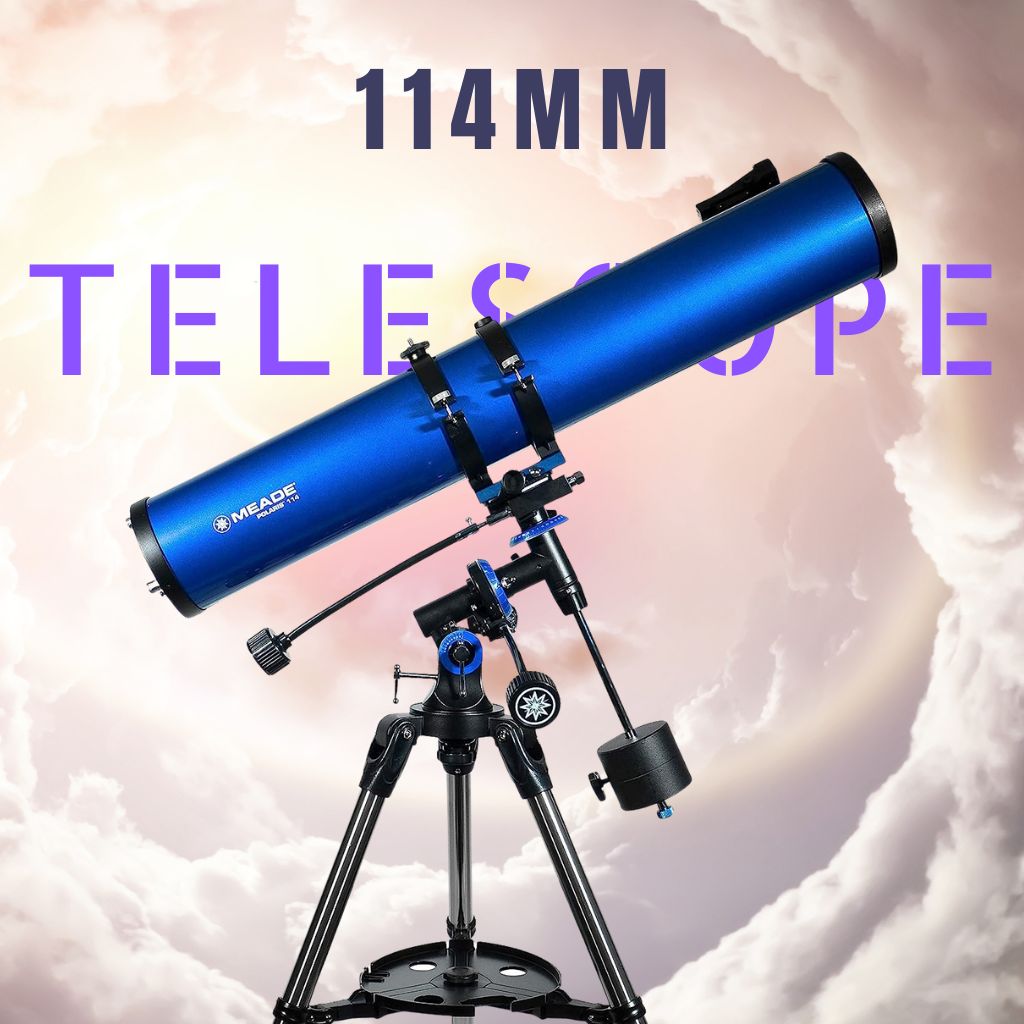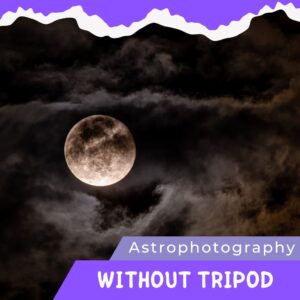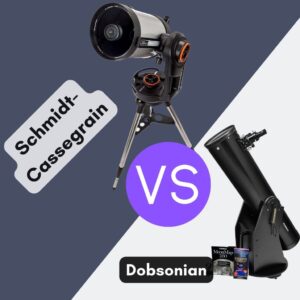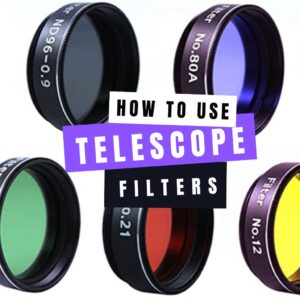This site contains affiliate links to products. I may receive a commission for purchases made through these links.
A telescope with a 114mm aperture is perfect for viewing celestial objects such as the Moon and planets, as well as bright deep-sky objects like star clusters, binary systems, and nebulae.
Telescopes are windows to the universe. They unlock an otherwise hidden world that lies beyond the reach of our naked eyes.
If you’re curious about what lies beyond our earthly realm and eager to explore the mysteries of the universe, a 114mm telescope can be your gateway to discovery.
This introductory-level instrument offers incredible potential for detailed observations of celestial wonders.
In this article, we will discuss the capabilities of a 114mm telescope, the best models available, and the benefits and limitations.
What astronomical objects can be seen with a 114mm telescope?
A 114mm telescope can view the following:
Solar system objects
Solar system objects offer captivating views through a 114mm telescope, revealing their intricate details and celestial beauty.
Here are some of the objects you can view with a telescope of this size.
The Moon
With a 114mm telescope, the Moon’s craters, valleys, and mountains become your backyard view. You can observe these in detail due to the telescope’s impressive light-gathering capability.
Planets
You can also see our solar system’s planets, like Mars and Saturn. Mars will appear as a small red disc. Saturn’s rings can be discerned with good seeing conditions.
Bright deep sky objects
Some brighter deep sky objects are also visible with a 114mm telescope. Some of them are as follows:
Orion Nebula
The Orion Nebula, one of the most observable nebulae in the night sky, is visible with a 114mm telescope. You can witness this massive stellar nursery’s glowing gas and dust, and you might even see the four central stars known as the Trapezium.
Pleiades Star Cluster
The Pleiades, also known as the Seven Sisters, is an open star cluster that a 114mm telescope can effectively observe.
You’ll see more than just the six or seven stars visible to the naked eye; with the increased light-gathering ability of a 114mm aperture, many more of the cluster’s stars become visible, making for a breathtaking view.
Andromeda Galaxy
The Andromeda Galaxy, our Milky Way’s neighboring spiral galaxy, is another deep-sky object visible with a 114mm telescope. Although you won’t see the full detailed spiral structure, you can observe a bright core and a fuzzy elliptical shape that hints at the galaxy’s true nature.
Hercules Globular Cluster
Another treat for 114mm telescope users is the Hercules Globular Cluster. This dense group of stars appears as a bright, circular cloud. With careful observation, you can resolve the cloud into numerous individual stars.
Ring Nebula
The Ring Nebula, a beautiful example of a planetary nebula, can be seen with a 114mm telescope. It will appear as a small, faint ring-like object, an echo of a star’s final stages of life.
Can I view Jupiter with a 114mm telescope?
You can view Jupiter and its most notable features using a 114mm telescope. Jupiter’s characteristic gas bands can be seen with this aperture size, appearing as subtle lines across the planet’s disk.
The planet’s four largest moons — Io, Europa, Ganymede, and Callisto — will also be clearly visible, appearing as bright dots surrounding the planet.
The Great Red Spot, a massive storm on Jupiter, can potentially be seen with a 114mm telescope.
However, viewing this feature requires excellent viewing conditions and the storm to be facing Earth during your observation time.
Is a 114mm aperture good for a telescope?
A 114mm (4.5 inches) aperture is a solid choice for a telescope. The aperture of a telescope determines its light-gathering ability, and with 114mm, you get a significant increase in light-gathering power compared to smaller scopes.
You may also like: What Is a Good Aperture for a Telescope?
Can I use a 114mm telescope for astrophotography?
While a 114mm telescope can be used for astrophotography, it might not be the best choice for those looking to capture highly detailed and wide-field images of deep-sky objects.
However, for beginner astrophotographers or those interested in planetary and lunar photography, a 114mm telescope can certainly serve as a good starting point.
But it has some limitations when it comes to deep sky photography.
Advantages of a 114mm Telescope
A 114mm telescope offers several advantages, making it an attractive option for both beginners and intermediate stargazers.
Here are some of the benefits:
Impressive light-gathering capability
With a 114mm aperture, these telescopes have impressive light-gathering capabilities. This means that they can gather more light than smaller instruments, allowing you to see fainter astronomical objects that would be difficult or impossible to see with smaller apertures.
Versatility
A 114mm telescope can provide pleasing views of a wide range of astronomical objects.
From detailed lunar surface observations to viewing planets like Jupiter and Saturn and even brighter deep sky objects like nebulae and galaxies, a 114mm telescope offers a good balance of deep sky and planetary viewing capabilities.
Affordability
Many 114mm models are relatively affordable compared to larger telescopes. This makes them a great option for beginners or those on a tighter budget who still want to enjoy the wonders of the night sky.
Limitations of a 114mm Telescope
While a 114mm telescope has many strengths, it also has some limitations that are important to consider, such as:
Limited views of fainter deep=sky objects
While a 114mm telescope can offer excellent views of the moon, planets, and brighter deep sky objects, it can struggle with very faint or distant deep sky objects.
Larger telescopes with greater light-gathering abilities will offer better views of these objects.
Not ideal for advanced astrophotography
While a 114mm telescope can serve as a decent starting point for beginner astrophotographers, those looking to capture highly detailed images of deep sky objects may find it lacking.
Larger telescopes and specialized astrophotography equipment would be more suitable for this purpose.
What is the magnification of a 114mm telescope?
Generally, the maximum useful magnification for any telescope is 50 times the aperture in inches or twice the aperture in millimeters. For a 114mm telescope, this means a maximum useful magnification of around 228x.
However, keep in mind that the clarity and detail of the view will also depend on the quality of the telescope’s optics and the viewing conditions.
Higher magnifications may make the image larger, but if the optics are not of good quality or the atmospheric conditions are not ideal, the image may not be clear.
Features and components of a 114mm telescope
When examining a 114mm telescope, you should be aware of several key features and components.
Aperture
With a 114mm aperture, a telescope can gather a significant amount of light, allowing for clearer and brighter views of celestial objects.
Focal length
The focal length – the distance between the telescope’s primary mirror or lens and the point where the light rays come together in focus – is crucial because it affects the telescope’s magnifying power.
In a 114mm telescope, the focal length typically ranges from around 500mm to 1000mm.
Optical system
Most 114mm telescopes are Newtonian reflectors. This type of optical system uses a large primary mirror to gather light and a secondary mirror to direct the light to the eyepiece.
Newtonian reflectors are particularly well-suited for deep sky observation, as they offer a large aperture at a relatively affordable price.
Mount type
Many 114mm telescopes come with either an altazimuth or an equatorial mount. An altazimuth mount moves up, down, and side to side, while an equatorial mount can follow the rotation of the sky, which is beneficial for long viewing sessions and astrophotography.
How do I choose the right 114mm telescope?
When it comes to choosing the right 114mm telescope, there are several factors to consider including:
Observation purpose
Are you mainly interested in observing the moon and planets, or are you more captivated by deep-sky objects like nebulae and galaxies? While a 114mm telescope can do a bit of both, your specific interests can guide your choice.
Portability
If you plan to travel with your telescope, you’ll want to consider its size and weight. Some 114mm telescopes are more compact and lightweight than others, making them more portable.
Budget
Telescopes come in a wide range of prices. Setting a budget can help narrow your choices. Remember that with many telescopes, you get what you pay for in terms of optical quality and build.
Features
Consider what features are important to you. Would you like a motorized mount for automatic tracking of celestial objects? Or perhaps you prioritize a telescope with slow-motion controls for smooth movements? Your preferences will guide your choice.
Best 114mm telescopes
Here are some of the top and popular 114mm models:
Celestron AstroMaster 114 EQ Reflector Telescope
Celestron AstroMaster 114 EQ Reflector Telescope is perfect for those entering the world of amateur astronomy. Its large 114mm aperture ensures good light-gathering capability, enabling you to explore bright deep-sky objects like nebulae and galaxies in greater detail.
The 1000mm focal length and the included 10mm and 20mm eyepieces offer versatile magnification options.
The AstroMaster 114mm reflector telescope also features an equatorial mount, making celestial tracking straightforward as you can follow the objects in smooth motion across the night sky.
A bonus is the StarPointer red dot finderscope, aiding in object location.
Meade Instruments 216004 Polaris 114 EQ Reflector Telescope
Meade Instruments 216004 Polaris 114 EQ Reflector Telescope is a perfect entry-level reflector telescope with a 114mm aperture and a 1000mm focal length.
The telescope tube is mounted onto a German equatorial mount with slow-motion controls for smooth tracking of celestial objects across the night sky.
This 114mm reflector telescope comes with three eyepieces providing low, medium, and high-powered magnification. It also includes a 2x Barlow lens to double the magnifying power of the eyepieces, offering a wide range of observing possibilities.
National Geographic 114EQ Telescope
The National Geographic 114EQ Telescope is a Newtonian Reflector that perfectly combines clarity, magnification, and portability. Its 114mm aperture and 500mm focal length offer substantial light-gathering power.
This enables users to observe a wide range of celestial objects, from the lunar surface’s details to distant galaxies.
Equipped with two Plossl eyepieces (26mm and 9.7mm), the 114EQ allows for various magnification levels.
It also features a slow-motion alt-azimuth mount, making it easier for users to track celestial bodies across the night sky. The red dot viewfinder helps in locating objects effortlessly.
Ideal for budding astronomers and adults alike, this Newtonian telescope offers a great entry point into astronomy, allowing for deeper exploration of the universe.
What accessories can I use to improve my viewing experience with a 114mm telescope?
To further enhance your stargazing experience with a 114mm telescope, you might consider investing in some accessories like the ones included below.
Eyepieces
Eyepieces are essential in determining the magnification of your telescope. Using different eyepieces, you can adjust the magnification, enhancing your view of astronomical objects.
For a 114mm telescope, you might want to have a set of eyepieces of different focal lengths.
Here are a couple of excellent choices:
- Celestron 8 to 24mm 1.25 Zoom Eyepiece: This eyepiece offers a continuous zoom from 8mm to 24mm, allowing you to adjust the magnification on the go. It gives you the flexibility to zoom in for a closer look at a specific object or zoom out to have a wider field of view.
- SVBONY Telescope Eyepiece Set: This set includes four eyepieces with focal lengths of 6mm, 12.5mm, 20mm, and 32mm. It also includes a 2x Barlow lens, effectively doubling the magnification of each eyepiece.
Telescope mount
The mount is what supports your telescope and allows you to track objects as they move across the sky. While your telescope likely came with a mount, you might want to upgrade for better stability or ease of tracking.
Consider the following mount:
- Celestron Heavy-Duty Altazimuth Tripod: This tripod offers a sturdy and portable mounting option for your telescope. The altazimuth design allows for smooth and precise manual tracking of celestial objects.
- Celestron Tripod (Regal Premium): This is a robust yet flexible telescope mount that’s a great option for users wanting to upgrade from a tabletop model. This mount is suitable for a wide range of telescopes, including the 114mm models.
Filters
Filters can help enhance the view of certain objects, reducing glare and increasing contrast. Lunar and planetary filters are particularly useful for viewing the moon and planets.
Here are some of our top picks:
- Gosky Telescope Filters Set: This set includes five color planetary filters to enhance the contrast and bring out the details of various planets, Crystal Moon Filter, Variable Polarizing Filter, and UHC Filter.
- Orion 1.25-Inch 13 Percent Transmission Moon Filter: This is a single moon filter that reduces the brightness of the moon, making it more comfortable to view and bringing out more surface detail.
FAQs about 114mm telescopes
Let’s address some frequently asked questions about 114mm telescopes:
Why choose a 114mm telescope over other sizes?
Choosing a 114mm telescope can be beneficial for a number of reasons.
Firstly, the 114mm aperture size offers a good balance between light-gathering ability and portability. This makes it an excellent choice for beginners and more experienced observers who need a portable option for traveling or quick observing sessions in the backyard.
Additionally, 114mm telescopes are typically more affordable than larger aperture models, making them a great entry point for those new to astronomy.
They provide enough power to observe a wide range of astronomical objects, including brighter deep sky objects like nebulae and galaxies and detailed views of the moon and planets.
What are the key differences between 114 and 130mm telescopes?
The main difference between a 114mm and a 130mm telescope lies in their aperture sizes, which in turn affects their light-gathering capability.
A 130mm telescope, having a larger aperture, can collect more light than a 114mm one. This means it can reveal fainter objects and more details, especially when observing deep-sky objects.
However, a 130mm telescope is likely to be larger and heavier than a 114mm one, potentially making it less portable.
Larger telescopes are generally more expensive, so a 114mm might be a more economical choice for beginners and those on a tighter budget.
Read also: What Can I See with a 130mm Telescope? (Answered!)
Takeaway: Observe the wide universe with a 114mm telescope
With a 114mm telescope, you’re not just getting a tool; you’re buying a ticket to the cosmic theatre, where the spectacle of the universe plays out in its grandeur.
For many astronomy enthusiasts, a 114mm telescope often serves as an excellent first telescope due to its balance between affordability, portability, and the ability to observe both solar system objects and some deep sky objects
Though it may not compete with larger telescopes in terms of light-gathering power, it still offers a significant step up from smaller models and a fantastic introduction to deep-sky observation.
A 114mm telescope shines when it comes to viewing bright objects like the moon, the planets, and brighter deep sky objects like the Orion Nebula and Andromeda Galaxy.
Its light-gathering capability and typically reasonable price point make it an attractive option for both beginners and seasoned stargazers.
The key to the 114mm telescope’s success in rendering clear, bright images lies in its parabolic mirror, which gathers light efficiently and directs it to the eyepiece for a high-contrast view of celestial objects.
Don’t forget to subscribe to our newsletter where you’ll find the latest cosmic discoveries, expert stargazing tips, and exclusive subscriber deals. Embark on your cosmic journey if you haven’t already!
You may also like:
- What can you see with a 60mm telescope?
- What Can You See With a 70mm Telescope?
- What Can You See With an 80mm Refractor? (Answered!)
- What Can You See with a 90mm Telescope?
- What Can You See With a 100mm Refractor Telescope?
- What Can You See with a 120mm Refractor?
- What Can I See With a 150mm Telescope?
- What Can You See Through Different Telescopes (explained!)
- Meade ETX 60 AT Review
- National Geographic Telescopes (All models)








